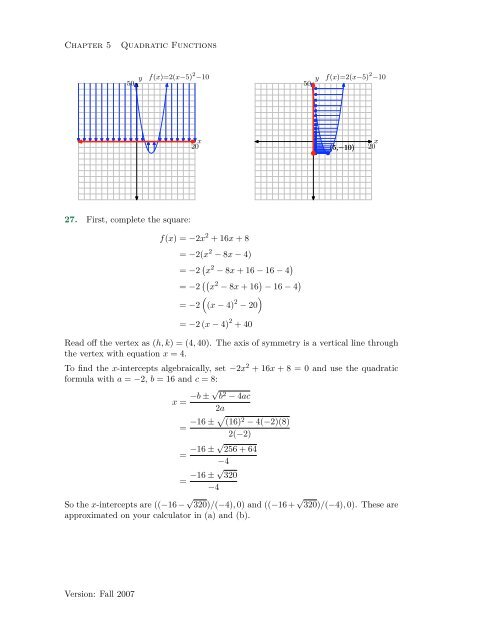Chapter 5: Exercises with Solutions
Chapter 5: Exercises with Solutions
Chapter 5: Exercises with Solutions
- No tags were found...
You also want an ePaper? Increase the reach of your titles
YUMPU automatically turns print PDFs into web optimized ePapers that Google loves.
<strong>Chapter</strong> 5Quadratic Functions50yf(x)=2(x−5) 2 −1050yf(x)=2(x−5) 2 −10x20(5,−10)x2027. First, complete the square:f(x) = −2x 2 + 16x + 8= −2(x 2 − 8x − 4)= −2 ( x 2 − 8x + 16 − 16 − 4 )= −2 (( x 2 − 8x + 16 ) − 16 − 4 )()= −2 (x − 4) 2 − 20= −2 (x − 4) 2 + 40Read off the vertex as (h, k) = (4, 40). The axis of symmetry is a vertical line throughthe vertex <strong>with</strong> equation x = 4.To find the x-intercepts algebraically, set −2x 2 + 16x + 8 = 0 and use the quadraticformula <strong>with</strong> a = −2, b = 16 and c = 8:x = −b ± √ b 2 − 4ac2a= −16 ± √ (16) 2 − 4(−2)(8)2(−2)= −16 ± √ 256 + 64−4= −16 ± √ 320−4So the x-intercepts are ((−16 − √ 320)/(−4), 0) and ((−16 + √ 320)/(−4), 0). These areapproximated on your calculator in (a) and (b).Version: Fall 2007
















